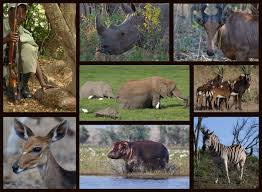Indian Legal System > Civil Laws > Environmental Laws > Wildlife Protection Act, 1972 > Importance of Wildlife

Traditionally wildlife refers to undomesticated animal species but has come to include all organisms that grow or live wild in an area without being introduced by humans Wildlife can be found in all ecosystems. Deserts, forests, rain forests, plains, grasslands and other areas including the most developed urban areas, all have distinct forms of wildlife.
The Section 2(37) of the Act defines wildlife as wildlife includes any animal, bees butterflies, crustacean, fish and moths; and aquatic or land vegetation which forms part of any habitat. So the meaning of the wildlife in this Act is very wide and inclusive of all kinds of flora and fauna.
Need of Wild Life Protection:
For a Healthy Eco-system:
The eco-system is relationships between different organisms connected through food webs and food chains. All of the Earth’s plants and animals rely on ecosystems to provide food and habitat. Even if a single wildlife species gets extinct from the eco-system, the whole food chain gets disturbed leading to disastrous results. Thus, saving wildlife plays a great role in ensuring a check on the ecological balance thereby, maintaining a healthy eco-system.
For example, a deer living in the meadow ecosystem needs water to drink, vegetation to eat and shrubs and bracken to hide in. If the deer population increases too much for their will be a load on the current ecosystem to provide these things to the extra deer population. Thus these resources will get exhausted and ultimately deer will die of starvation.
For Their Medicinal Values:
A huge number of plants and animal species are used to benefit humans in one way or the other. Many of the medicines such as aspirin, penicillin, quinine, morphine, and vincristine have been derived from uncultivated plants. If we talk about the ancient medicinal system of Ayurveda, it has also been using extracts and juices from various plants and herbs to cure problems like blood pressure, diabetes and many other neurological problems since ages.
A huge number of plants and animal species are used to benefit humans in one way or the other. In the ancient medicinal system of Ayurveda has been using extracts and juices from various plants and herbs to cure problems like blood pressure, diabetes and many other neurological problems since ages.
It’s not only the plants which are useful, but many of the extracts from animal species are also rich in nutrients and anti-oxidants. For instance, the oil from the lever of Codfish is rich in Omega 3 and Omega 6 anti-oxidants that help fight aging, chemicals derived from shrimps and lobsters are used in treating fungal infections, the venom of Cobra is used as a cure for leprosy and the list does not end here. Today, various species of animals are also being studied and researched to find cures to deadly diseases like cancers, Alzheimer’s and Parkinson’s. If wildlife is not preserved today, there would soon be a time when the human race would also be in great danger.
For Agriculture and Farming:
Human population largely depends on agricultural crops and plants for its food needs. The fruits and vegetables are a result of a process called pollination. In pollination, the pollen grains from androecium (male reproductive organ) of the flower are transferred to the gynoecium (female reproductive organ) of the flower. The result of pollination is fertilization and ultimately production of seeds. The birds, bees, and insects play an important role as pollinating agents. Besides pollination, many birds also play an important role in controlling pests by feeding on them.
Wildlife also plays a significant role in keeping the environment clean and healthy. Many micro-organisms, bacteria, slime molds, fungi, and earthworms feed on plant and animal wastes, and dead organisms, decomposing them and releasing their chemicals back into the soil. Thus the loss of nutrients in the soil is replenished. The birds like eagles and vultures act like scavengers and help to remove the carcasses and dead bodies of animals thereby, keeping the environment clean.
For Preserving Rich Bio-diversity:
Scientists and researchers are aggressively working these days to preserve plants and animals through ‘Gene Banks’. These gene banks are a storehouse of cells and tissues of scores of wildlife species and have a very important role in agriculture and farming. During the epidemic, climate change and calamities many species are lost. Using the cells preserved in the Gene Banks the original plant varieties and animal breeds be re-generated. Similarly, new varieties and breeds with improved genetic traits are developed. The methods of biotechnology and genetic engineering are beneficial in the dairy industry with improved genetic species yielding more milk, showcasing better health and fertility.
For Economic Value and Livelihood of Individuals:
Wildlife also plays an important role in improving the economy of the country. Tourists from all across the globe come to see endemic and rare species at wildlife reserves and forests. They are a source of foreign exchange and a source of livelihood of the local population. Other activities include bird watching, trekking, fishing, river rafting, etc. For many, people living in or near the forest, wildlife is the source of income and provides them with their daily bread and butter.
For socio-cultural value:
Wildlife also has an important role to play in different cultures. Many animal and plant species actually represent the cultural backbone of the community. Certain animals are even associated with particular gods and goddesses and are often symbolic of a deity’s power.
Next Topic: Objectives and Features of Wildlife Act